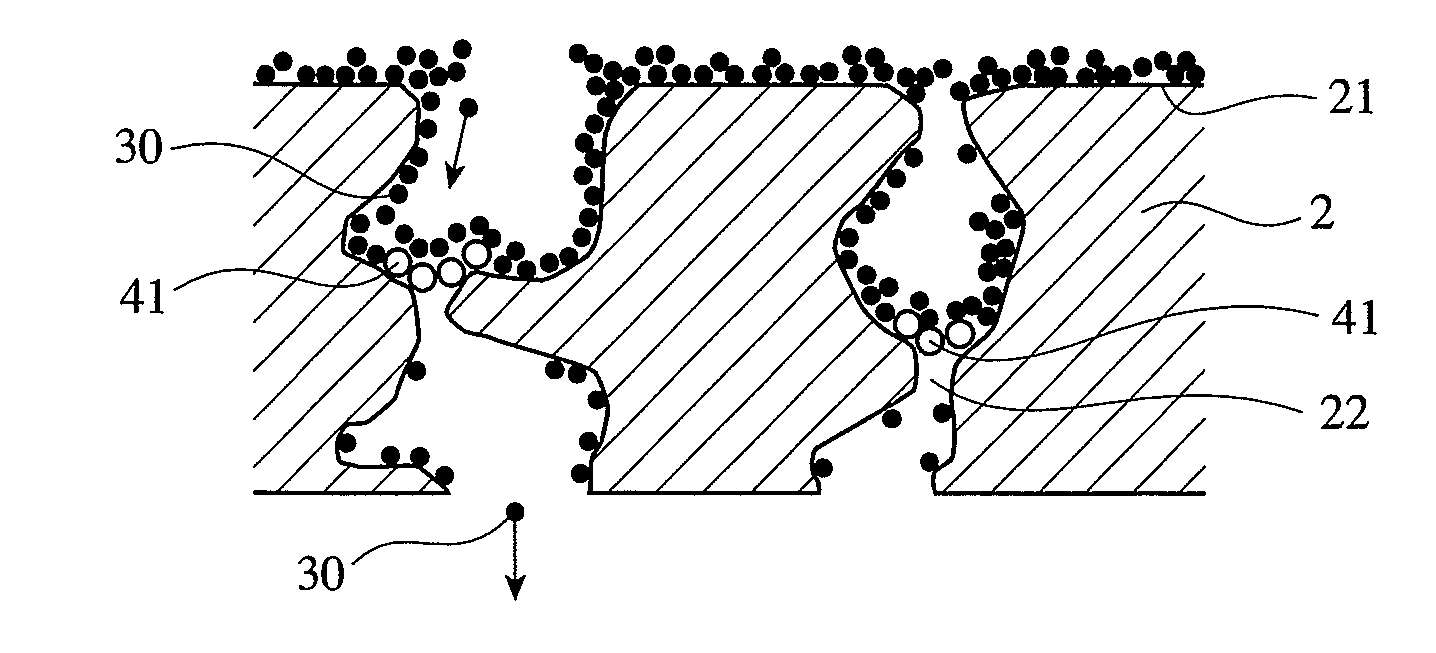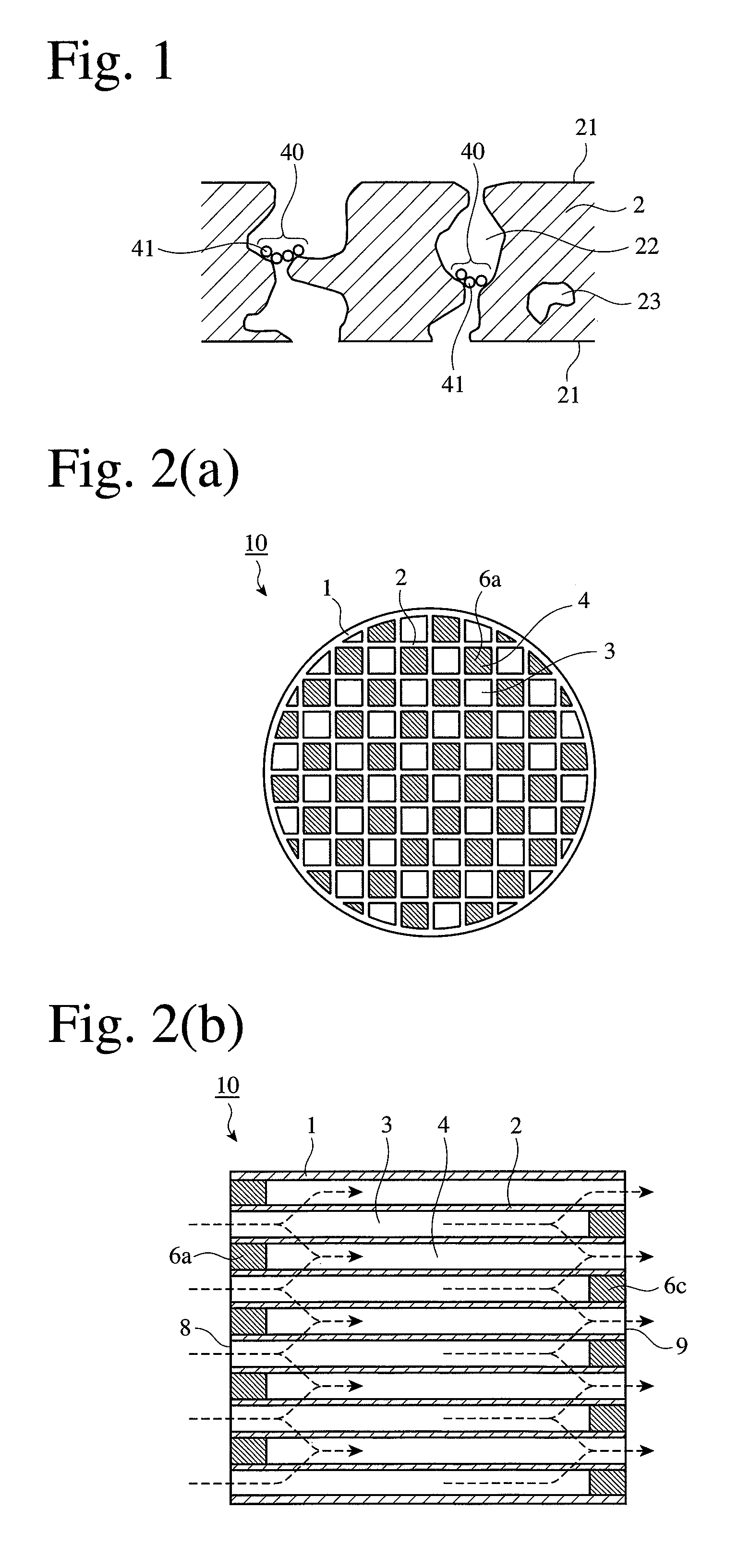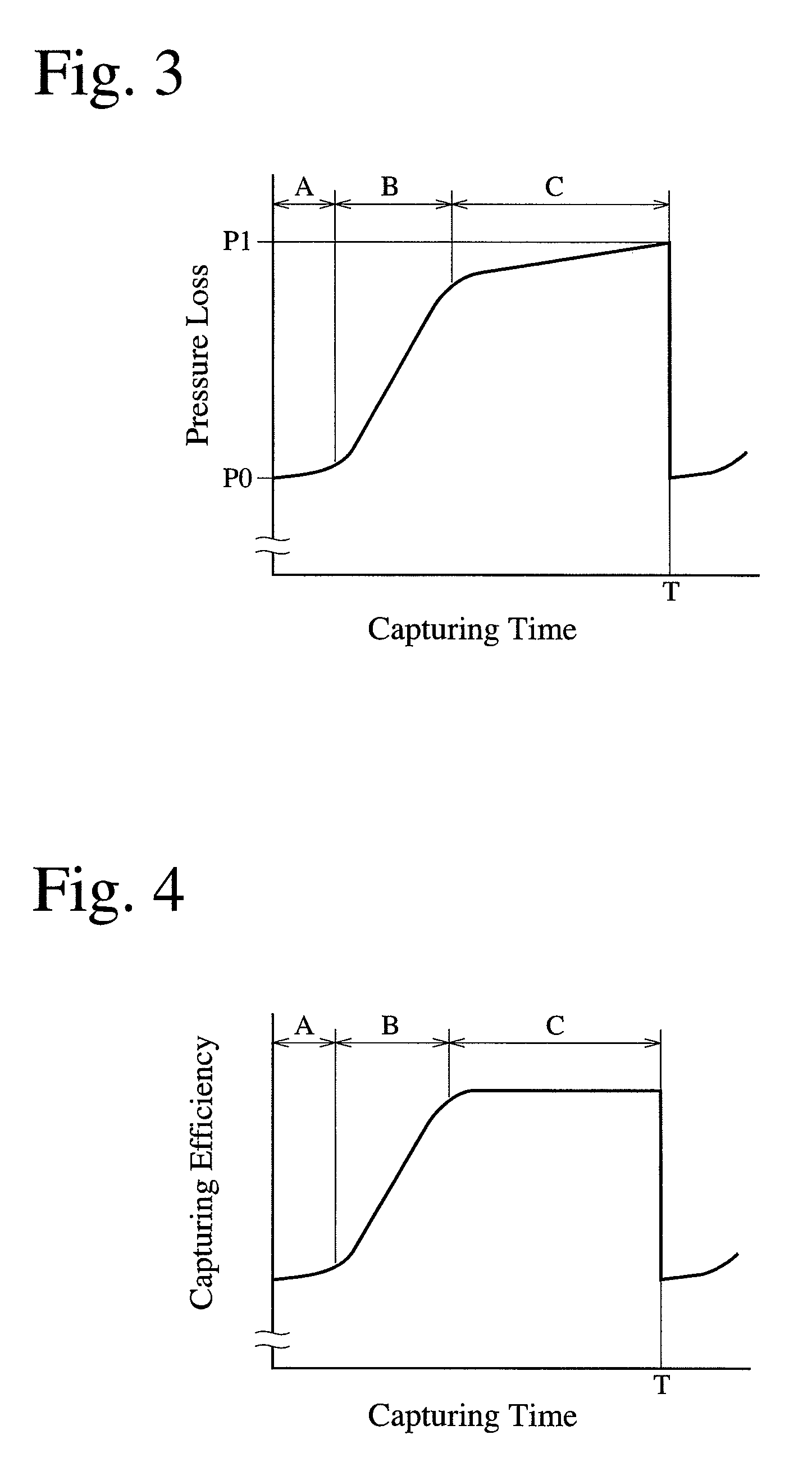Ceramic honeycomb filter and its production method
a honeycomb filter and honeycomb technology, applied in the field of honeycomb filter, can solve the problems of high exhaust gas temperature, adversely affecting human beings and the environment, and less burning pm in the usual diesel engine operation, and achieve the effect of easy continuous regeneration and high pm-capture efficiency
- Summary
- Abstract
- Description
- Claims
- Application Information
AI Technical Summary
Benefits of technology
Problems solved by technology
Method used
Image
Examples
example 1
Production of Honeycomb Filter
[0044]To produce the honeycomb filter 10 shown in FIG. 2 by a known method, kaolin powder, talc powder, silica powder, alumina powder and aluminum hydroxide powder were mixed to prepare cordierite-forming material powder comprising 50% by mass of SiO2, 35% by mass of Al2O3 and 15% by mass of MgO. The amounts of these components may be adjusted in a range of 48-52% for SiO2, 33-37% for Al2O3 and 12-15% for MgO. This powder was mixed with methylcellulose and hydroxypropyl methylcellulose as binders, a lubricant, and a foamed resin as pore formers. After thorough dry-blending, water was added to carry out sufficient kneading to prepare a moldable ceramic material. This moldable material was extrusion-molded and cut to a honeycomb-structure, molded article. This molded article was dried and sintered to produce a cordierite honeycomb structure. This honeycomb structure was provided with plugs 6a, 6c in end portions of flow paths 3, 4 to obtain the honeycomb ...
examples 10 and 11
[0068]The honeycomb filter of Example 10 was produced in the same manner as in Example 1, except that the entire honeycomb filter was immersed in water before heat-resistant particles were supplied thereto together with air through the exhaust-gas-inlet-side end 8. The honeycomb filter of Example 11 was produced in the same manner as in Example 10, except that only half of the honeycomb filter on the exhaust-gas-inlet side was immersed in water. With respect to these honeycomb filters, an average pore diameter, porosity, an opening area ratio of pores, mass difference between the downstream side and the upstream side, initial pressure loss (expressed by a relative value assuming that Example 1 was 100), capturing efficiency, and (pressure loss 4 h / pressure loss 2 h) were measured in the same manner as in Example 1. The results are shown in Table 3. The honeycomb filters of Examples 10 and 11 had improved capturing efficiency than that of Example 1, though their initial pressure loss...
PUM
| Property | Measurement | Unit |
|---|---|---|
| pore diameter | aaaaa | aaaaa |
| diameter | aaaaa | aaaaa |
| diameter | aaaaa | aaaaa |
Abstract
Description
Claims
Application Information
 Login to View More
Login to View More - R&D
- Intellectual Property
- Life Sciences
- Materials
- Tech Scout
- Unparalleled Data Quality
- Higher Quality Content
- 60% Fewer Hallucinations
Browse by: Latest US Patents, China's latest patents, Technical Efficacy Thesaurus, Application Domain, Technology Topic, Popular Technical Reports.
© 2025 PatSnap. All rights reserved.Legal|Privacy policy|Modern Slavery Act Transparency Statement|Sitemap|About US| Contact US: help@patsnap.com



